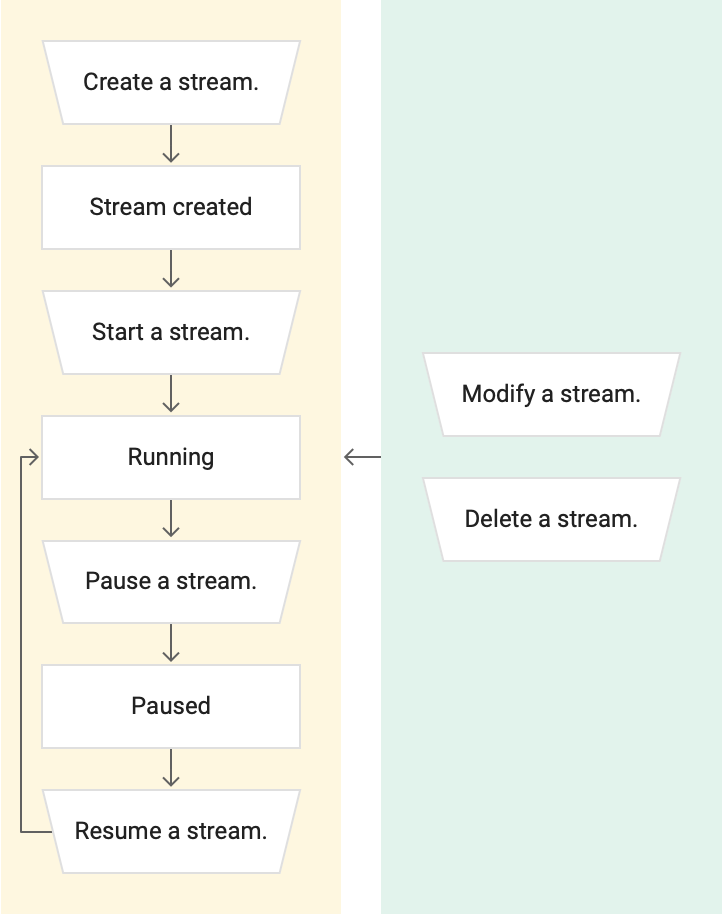下图显示了数据流的生命周期中的各种状态和转换。

首先,您需要创建直播。Datastream 使用此数据流将数据从源数据库转移到目标位置。创建数据流后,数据流的状态为 Not started。
创建数据流后,您需要启动它。数据流的状态更改为 Starting。这表示正在启动和验证数据流。
- 如果数据流有效,则其状态会从
Starting更改为Running。 - 如果数据流无效,则其状态会从
Starting更改回Not started。然后,您可以纠正数据流的问题。例如,如果错误与数据流的连接信息相关联,则修改数据流定义。解决数据流的所有问题后,重新启动数据流,状态会更改为Starting,然后更改为Running。
您可以暂停数据流。暂停数据流时,Datastream 不会将来源数据库中的任何新数据拉取到目标位置。不过,某些数据可能会继续写入目标位置,因为运行中的数据会继续传输。
因此,暂停数据流后,其状态会从 Running 更改为 Draining。排空数据流就是清空数据流,使其不包含任何数据。数据流排空所有数据后,其状态会从 Draining 更改为 Paused。
在恢复暂停的数据流时,其状态会从 Paused 更改为 Running。
您可以在数据流的生命周期内随时执行以下两项操作:
流式传输错误
正在运行的数据流可能会遇到错误,这可能会导致数据流将其状态更改为 Failed 或 Failed permanently:
Failed状态表示流遇到了可恢复的错误。这意味着,数据流要么仍在活跃状态,要么正在持续尝试运行。Failed permanently流是指遇到不可恢复的错误而无法继续运行的流。此类错误可能会导致数据丢失。
您可以解决 Failed 数据流的问题,然后数据流会自动恢复。其状态会从 Failed 更改回 Running。如需了解详情,请参阅排查直播问题。
您可以手动恢复 Failed permanently 流。如需了解详情,请参阅恢复数据流。
后续步骤
- 如需了解如何运行流,请参阅运行流。
- 如需了解如何修改数据流,请参阅修改数据流。
- 如需了解如何排查直播问题,请参阅排查直播问题。
- 如需了解如何恢复直播,请参阅恢复直播。
- 如需了解如何删除数据流,请参阅删除数据流。

